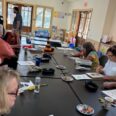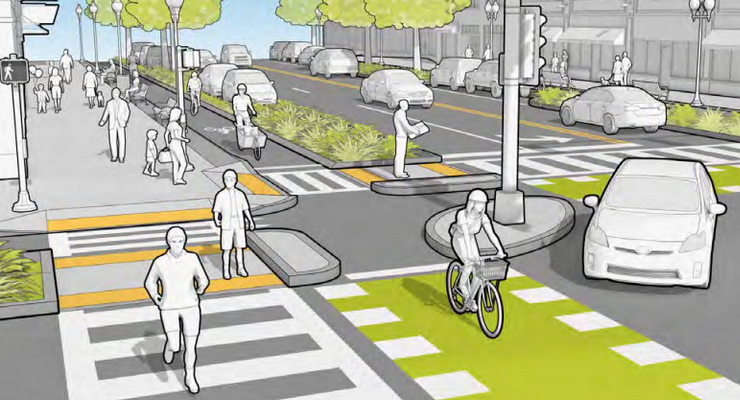[Updated] Hoping to avoid any repeat of community meetings like the boisterous and contentious one earlier this year to discuss a proposed road diet for Orange Grove Boulevard, this week the City Council approved purchasing a software package that can develop comprehensive and coordinated street plans while keeping the community very involved in the process.
The road diet proposed last year would have dramatically changed Orange Grove Boulevard between Lake Avenue and Sierra Madre Villa Avenue, reducing the number of traffic lanes from four to two. It sparked vehement outcry and upended City plans.
The new software, said Transportation Director Fred Dock at Monday’s City Council meeting, in response to questions from Councilmember Margaret McAustin, would prepare a five-year “Complete Street” blueprint that identifies and prioritizes “Complete Street” design elements by location.
“We need to start looking at …a way to add elements that are needed for pedestrians and bicycles, intersection safety, and do them at the same time,” Dock added.
As Dock explained, “What we have asked for, essentially, is the development of a tool that works across all layers and develops a priority based on weighted criteria, and then we need to do outreach with the community to explain what we’re trying to get their input on. What do they find to be important?”
Continued Dock, “I try to describe it as more of a layered mapping system where we basically map all the missing sidewalk gaps, we map all of the bike lane gaps, we map all of the roadway issues, and we map all of the missing science. We put in all the intersection treatments and we deal with the pattern of collisions that we deal with where we can make remediation.”
“We bring all of the traffic investigations that we’re doing across the City into this framework,” he added.
But Dock noted, “It’s not about road diets, it’s not about bike lanes, it’s about all the different elements that go into street design…whether they’re pedestrians, bicyclists or motorists. It has to do with getting around, it has to do with a level of accessibility for people.”
According to Dock, the City uses a six-step program to be able to work with residents and users of selected project corridors.
But, as he noted, “That’s still way too long a process. So this programming tool approach was thought to be able to bring forward all of those elements in a quadrant of the City, and then be able to organize them, so that people in that area, could be at least aware that someone in the City was working towards trying to close the sidewalk gap, or trying to put in a crosswalk, and to be able to follow that process going forward.”
According to the City staff report, the software project will “help in determining areas that need pedestrian and vehicular safety enhancements. The project would integrate with the Pavement Management Programming development by Public Works to optimize the expenditure of street maintenance funds in the implementation of Pasadena’s Complete Streets policies.
The report added, “The (software) is anticipated to require both technical analysis and community engagement. The technical analysis would develop a reproducible, quantifiable approach to identifying which Complete Streets elements are needed, by location and prioritizing when the implementation is appropriate.”
Toole Design Group, said the staff report, was identified “on the basis of the firm’s superb knowledge and understanding of complete street issues and their development of an analytical platform for prioritizing active transportation improvements for the National Cooperative Highway Research Program.”
Toole Design Group, LLC is “a consulting firm with expertise to create dynamic communities where walking, biking and transit use is possible for people of all ages and abilities,” according to the staff report.
The firm “uses data-driven recommendations and ambitious implementation strategies that reflect a community’s values and priorities” the report added.
Toole Design Group has not previously contracted with the City, but is currently a subcontractor to OKSAssociates on the Union Street Protected Bicycle Lane CIP project.
After the review of the proposal, the City’s Department of Transportation determined that the proposal submitted by the firm “addresses all requests in the RFP while serving the City’s best interest.”

















